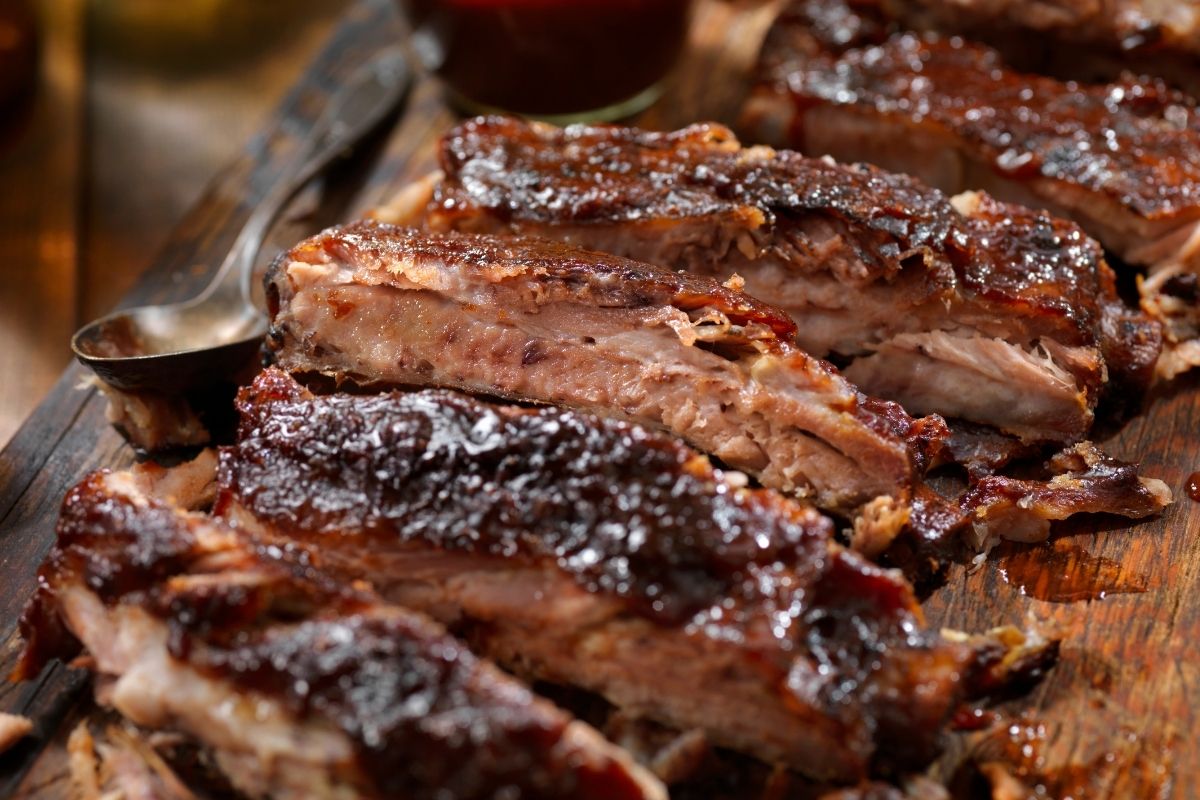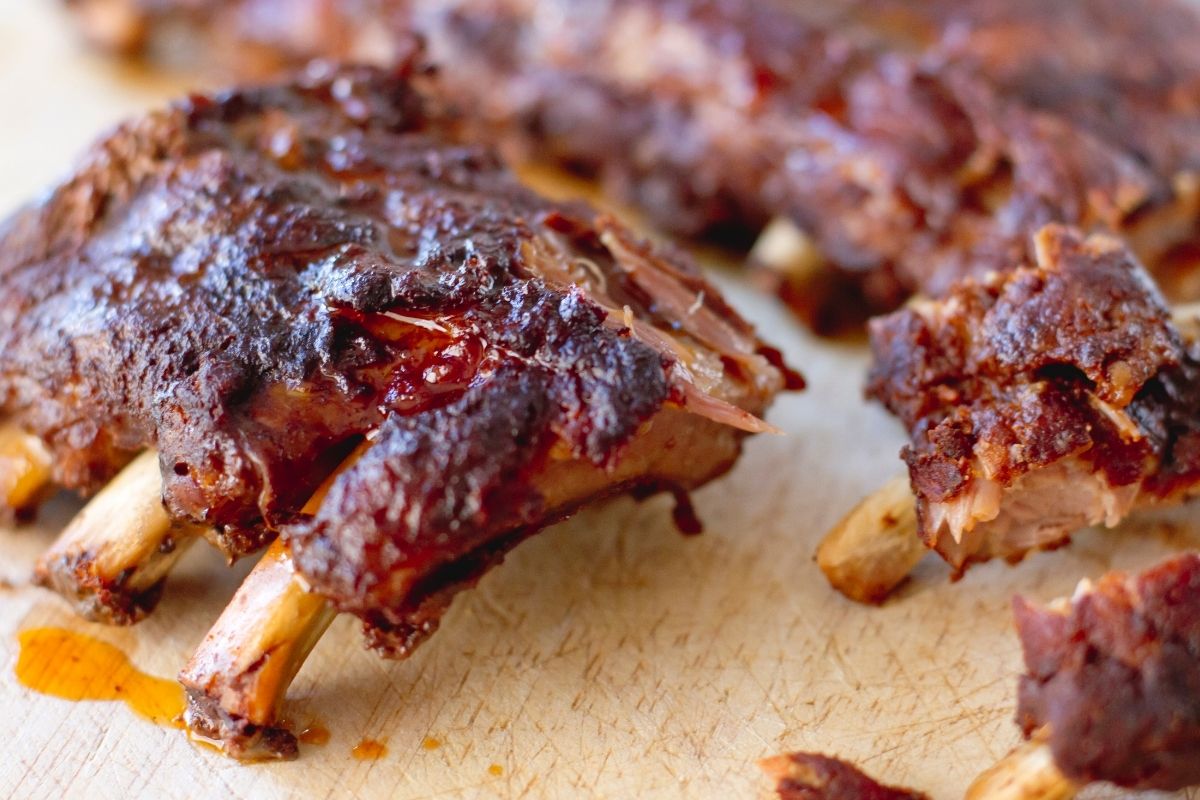When most people think of a wonderful smoked pork rib, they imagine a summer backyard barbecue with neighbors or friends.
Think of meaty pig ribs simmering over an open flame, their alluring scent alerting your neighbors that something delicious is cooking on your barbecue or smoker. Is there anything better than that?

However, have you ever struggled to choose the best ribs for your BBQ? Perhaps you are unsure what rib option is the best.
To the uninformed, all pork ribs seem identical. However, any BBQ pro can tell the difference almost immediately. Indeed, the more you educate yourself on the several sorts of pork ribs available, the easier it will be to choose.
So should you choose St. Louis ribs or baby back ribs? Given how often this question is asked, we made this list of the definitive differences between the two types, so you can see which one will be best for your next cookout.
Here is everything you need to know about St. Louis ribs and baby back ribs.
St. Louis Ribs
St. Louis ribs are spare ribs that have been sliced at the end to remove the triangular hunk of cartilage that generally protrudes. Due to their origin in the lower ribcage, spare ribs are fattier and more delectable than back ribs.
Additionally, the bones are flatter, which allows for easier browning of the surface.
So why do the butchers even bother to remove this cartilage in the first place? Well, it is all about presentation. St. Louis ribs are significantly more aesthetically appealing, which is why pitmasters prefer to use this style of rib in competitions.
Additionally, newbies may find dealing with all that connective tissue overwhelming, which is another good reason to remove the cartilage in the first place.
Baby Back Ribs
Even if you enjoy eating baby back ribs, you may be unaware that they are not made from baby pig bones. This is a widely held misconception. The term “baby backs” refers to the ribs’ small size, not to their pig origin.
Baby back ribs begin at the top of the ribcage, where the ribs meet the spine. This cut is produced after the loin is removed, which accounts for the delicate nature of the rib meat.
Baby back ribs are also known as “loin back ribs” and “back ribs.” They are, however, smaller than spare ribs, which is why they are referred to as “baby” ribs.
Typically, when you purchase a rack of baby backs, you receive between ten and thirteen ribs. Pigs, depending on the breed, have between fifteen and sixteen ribs. Nevertheless, as the butcher separates the carcass, a few bones remain.
The term “cheater rack” refers to a rack with less than 10 ribs.
A slab of baby back ribs is wider on one side than the other, with the longer bones reaching around six inches in length and the lesser bones reaching approximately three inches.
Due to the twisted nature of the bones on a rack of baby backs, cooking them over direct heat might be difficult. That is why we recommend cooking baby back ribs in an indirect manner, such as smoking.
St Louis Ribs Vs Baby Backs

Now that we have established what St Louis and Baby Back ribs are, let’s take a closer look at them to help you decide which one is right for you!
Flavor
While lean meat offers several advantages, one of them is that it tastes better. Due to the absence of fat on the bone, back ribs lack the rich pork flavor of spare ribs. That is why they are typically slathered with barbecue sauce when they appear on restaurant menus.
Over-seasoning St. Louis ribs are unnecessary since the melting fat creates a rich flavor that is both savory and sweet. While it is fine to serve the meat with sauce on the side, many grillers prefer to let the pork’s natural flavor shine through.
Bear in mind that if you choose to add sauce to the ribs, do it during the final 10 to 15 minutes of cooking. If added prematurely, the sugar in the sauce may burn, providing an unpleasant flavor to the pork.
Size
A slab of baby back ribs should weigh between two and three pounds as a general rule. Around half of that weight is composed of bone, while the remaining half is primarily composed of flesh. Generally, a rack of baby backs feeds two people, unless one of the diners has an enormous appetite.
Surprisingly, baby back ribs are comparable in size to St. Louis style ribs. Additionally, the racks weigh between 2 and 3 pounds and contain between 10 and 13 bones.
The bones, on the other hand, are around 5 to 6 inches long and exhibit minimal distinction between them. Additionally, you may expect fat to absorb a bigger percentage of the weight.
How To Cook
Whether you choose baby back ribs or St. Louis ribs, one thing is certain: when grilled or smoked, these cuts taste amazing. If you have time, we recommend smoking the meat, since the wood imparts a burst of flavor that complements rather than overwhelms the pork.
Even if cooking the ribs inside is an option, it is crucial to cook them low and slow. This needs lengthy, low-temperature cooking of the beef for an extended period of time to allow the fat to render out slowly.
When ribs are cooked in this manner, the meat becomes delicate and looks to melt in your mouth when you bite into them.
While we advocate cooking pig ribs (and even beef ribs) low and slow, baby back ribs may be cooked at a higher temperature. If you’re pressed for time to prepare supper, baby-backs are the way to go.
Finally, if you’re going to begin by browning the ribs in a pan, choose St. Louis ribs. Because the rib rack is symmetrical and the bones are flat, the majority of the surface area will come into contact with the heat.
Meanwhile, the back ribs are curved to the point that even browning the flesh is difficult.
Cooking Time
As you may expect, St. Louis ribs take longer to cook owing to their larger size.
Cooking St. Louis ribs at 300 degrees Fahrenheit will take around 2 1/2 to 3 hours. In comparison, the same quantity of baby back ribs should cook in 1 1/2 to 2 hours.
Cooking at a temperature of 250 or 275 degrees Fahrenheit may take somewhat longer. If you have more time, we recommend this step since the meat will be much more soft and tasty.
Summary – Which Is Better?
Baby back ribs provide a variety of advantageous properties, and their preparation is straightforward for beginners. While St. Louis ribs require a bit more attention throughout the cooking process, they are a delightful and sophisticated alternative.
Your selection will be decided by several factors, including the length of time available to prepare the ribs, the number of visitors, and if you want thinner meat or a more robust flavor.
Before buying one type of rib, we recommend that you taste both varieties of ribs. This will help you determine which one, if any, you prefer.
- The 9 Best BBQ Grills for Smoking Brisket - December 29, 2022
- 6 Mouth Watering Grilled Shrimp Recipes - September 16, 2022
- 6 Delicious Grilled Desserts - September 16, 2022

